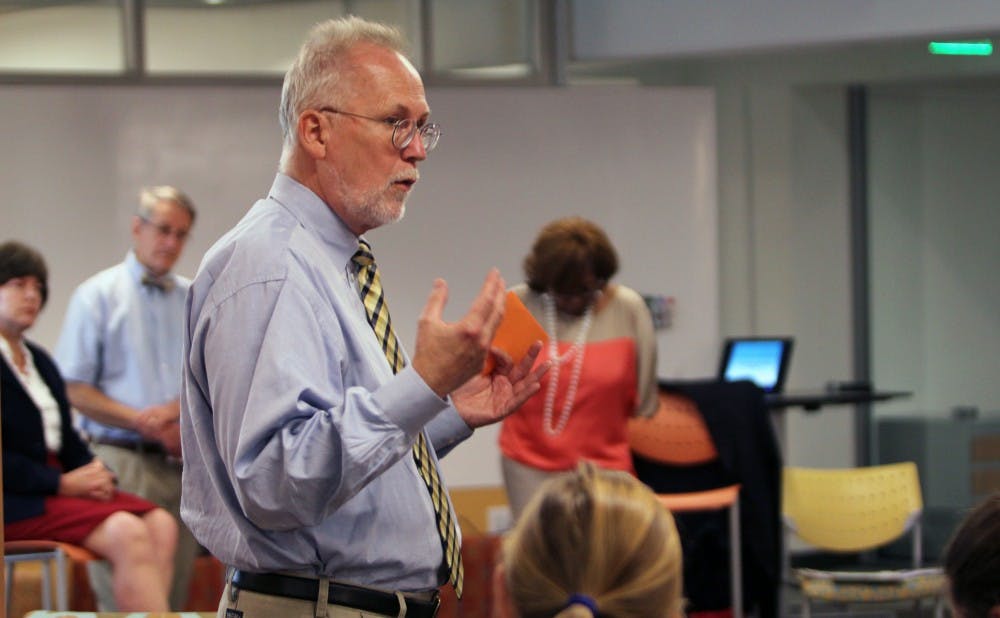Durham public schools face challenges of socioeconomic factors in educating students.
In a panel discussion at Gross Hall on Tuesday night, three members of the Durham Public School Board of Education discussed the issues that local schools presently face.
“Which one of these questions have we solved—getting a person on the moon or getting all 3rd graders up to reading level?” said David Malone, director of the service learning program.
One of the topics discussed was charter schools and their effects on public schools.
“Charter schools don’t have to bus or feed children—public schools can compete if the playing field is leveled,” said panelist Minnie Forte-Brown, who currently serves as vice-chair of the Board.
Although the state of North Carolina was originally going to have one charter school per district, Durham has nine charter schools and there are 12 applications for new charter schools currently being processed, noted panelist Steve Schewel, a former school board member who is now serving on Durham City Council and visiting assistant professor of public policy.
“You never see an overcrowded charter school because they can limit the number of students,” said panelist Nancy Cox, who has taught in Durham and Chapel Hill and currently sits on the Board. “We are constantly trying to carve out smallness within the largeness of our [public] schools.”
One criticism that panelists raised concerning charter schools was a lack of diversity.
Schewel noted how in the case of The Central Park School for Children—where previously only 3 percent of students were on free or reduced lunch—steps have been taken to fix the problem. The school's principal decided to "double weight" the lottery so that disadvantaged students have a higher chance of getting in, Schewel said.
But questions still remain about the coexistence of charter schools and public schools in Durham, particularly with regard to the distribution of low-income students.
"Will charter schools share the burden of poverty or not?" Schewel said. "If they don't, we'll have a two-tier system."
Panelists also discussed promising aspects of Durham public schools.
“Data says that 67 percent of children qualify for free and reduced lunch,” Forte-Brown said. “We’re preparing to move children of color and of poverty from mediocrity to excellence.”
She pointed out the example of Hillside High School, which has brought up its graduation rate from 52 percent four years ago to 83.4 percent now.Cox noted interdisciplinary initiatives established in middle schools focusing on global studies and service learning. For example, one of the programs teaches eighth graders about animal rights and takes them to work with the Animal Protection Society of Durham.
Schewel spoke about the specialized public schools that exist in Durham, including City of Medicine Academy, Early College High School, and Middle College High School.
“A great strength is that people leave Durham public schools prepared for everything,” Schewel said, noting the diversity of the school system.
Students appreciated the panelists’ firsthand accounts of the education system.
“I’m not an education major, but this panel really opened me up to the questions and challenges that the DPS system is facing,” said senior Yumeng Fang, “I’m always interested in issues of education.”
Despite the difficulties facing DPS, the panel emphasized the system's importance to the community.
“Public school is really important—it’s the only place in America where all children can come regardless of ability, regardless of economics, regardless of whatever you have,” Forte-Brown said. "It’s America’s last hope."
Correction: The first quote of the article was said by David Malone, not Martin Zelder. The Chronicle regrets the error.
Get The Chronicle straight to your inbox
Signup for our weekly newsletter. Cancel at any time.

